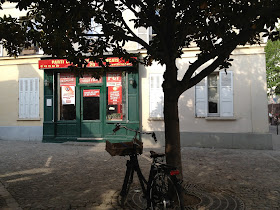I’m ready to pass out cigars. The new baby arrives September
3rd. Can’t believe it’s
already the fifth in the series. The
mother is doing fine, but she was somewhat surprised when someone named Kirkus wrote to say he’d had an advance
glimpse of the soon to be with us little package and it “reads more like an
Elmore Leonard caper than a whodunit.” Mom
swears she knew “whodunit” and it wasn’t that Elmore Leonard fellow (God rest
his brilliant soul).
+.jpg) |
| Elmore Leonard (1925-2013) |
I think I’ll stop now and try to make sense. Rather, I’ll let Publishers Weekly do it for me, “Siger’s satisfying fifth mystery
featuring Chief Inspector Andreas Kaldis… a complicated international plot that threatens to disrupt
the easygoing, anything-goes life that Mykonos is famous for—keeps the reader
engaged,” or maybe Chicago’s The Greek
Star, “[Siger] has so profoundly captured the essence of Modern Greece and its
people, you can’t believe he isn’t Greek.
The reader travels to Greece and is right in the center of the action… Siger
is a gifted storyteller. His stories grab you and don’t let go.”
Blush, blush, blush.
Honest, I am blushing, though you might not be able to tell as I’m still on
Mykonos and won’t be back in the US on book tour for MYKONOS AFTER MIDNIGHT until November.
However, I will be in Albany, New York to participate with some of my MIE
mates in Bouchercon 2013 and announce MAM’s
release with a little promotional surprise at the convention (our Murder is
Everywhere Panel, “When in Rome,” kicks off the conference at 12 noon on
Thursday, September 19th).
After all, we must keep our publishers at least thinking we care about
doing more than just writing our books. J And in my case I’ve got the
absolute best, most supportive publisher in the mystery world, POISONED PEN PRESS, with a special
shout out to my nonpareil editor,
Barbara Peters.
So, here’s a quick sketch of the new book, the one in which I
return to my home island of Mykonos, scene of my debut novel in the series, Murder in Mykonos—followed by Assassins of Athens, Prey on Patmos, and
Target: Tinos (if you’re going to do
a BSP piece once a year, you might as well go all the way!):
MYKONOS AFTER MIDNIGHT
begins with a legendary nightclub owner found bludgeoned to death in his
Mykonos home. In his lifetime he’d
helped transform Mykonos from an obscure, impoverished Aegean island into a
world-renown summertime playground for the world’s rich and powerful, and the
Mykonian people into some of the wealthiest in Greece.
All evidence points to obvious killers, but the murder has
put long hidden, politically explosive secrets in play and drawn a dangerous
foreign investor to the island. Andreas
Kaldis, feared head of Greece’s special crimes division, is certain there’s a
far more complex solution to the murder.
Andreas’ quest for answers amid the entrenched cultural contradictions
that give Mykonos so much of its magic, soon has him battling ruthless opportunists
preying on his country’s weakened financial condition and learning that there
is a high, unexpected price to pay for his curiosity.
He finds himself locked in war with a powerful, clandestine
international force willing to do whatever it takes to wrest control of Mykonos
from its old guard, no matter what the cost, no matter who must die. It is a struggle of the sort playing out
across much of Greece during this time of dire economic crises overrunning a
society rooted in the past trying to catch up with the present.
I’m very proud of this book.
I consider it true to the gracious words on my Kaldis series expressed
by Marilyn Stasio of The New York Times when,
in selecting Target: Tinos as one of
her five picks for the beach in 2012, wrote: “Another of Siger’s thoughtful
police procedurals set in picturesque but not untroubled Greek locales.”
I hope you’ll agree, but more importantly, ENJOY!
Thanks. Our regularly
scheduled programming will return next Saturday.
Jeff—Saturday








































.jpg)
.jpg)


